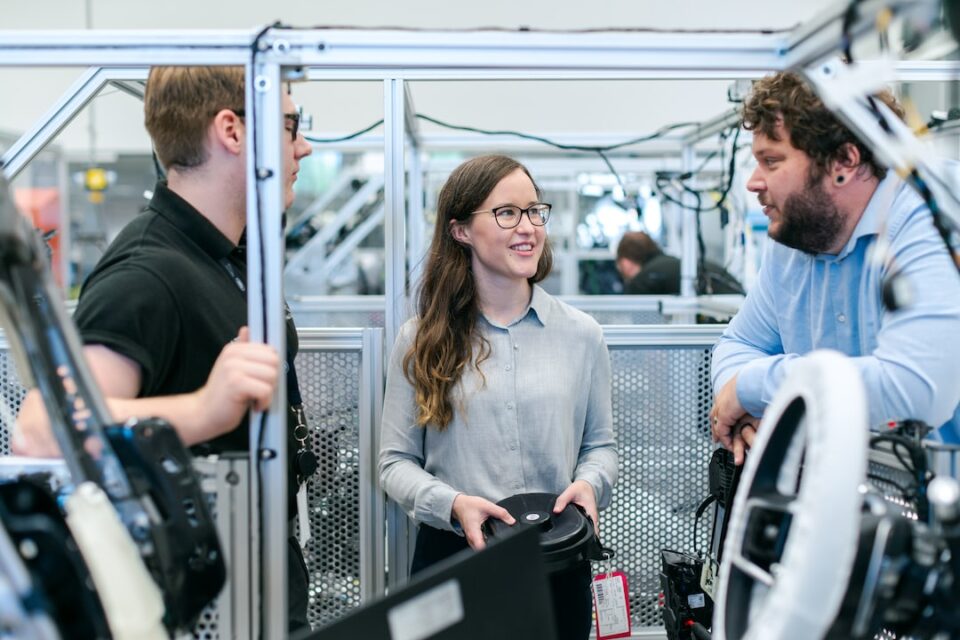Integrating Computer Vision and Machine Learning in Improving Industrial Automation
In recent years, there has been a significant increase in the use of advanced technologies such as computer vision and machine learning in various industries. These technologies have proven to be highly beneficial in improving the efficiency and effectiveness of processes, especially in industrial automation. By integrating computer vision and machine learning, manufacturers are now able to optimize production lines, enhance quality control, and increase overall productivity. In this blog post, we will explore the advancements in these fields and shed light on how they are reshaping industrial automation.
Computer vision, a branch of artificial intelligence, focuses on teaching computers to capture and interpret visual data from the physical world. This technology enables machines to see and understand their surroundings, just like humans do. By combining computer vision algorithms with machine learning techniques, computers can identify and classify objects, recognize patterns, and make data-driven decisions independently.
One of the key applications of computer vision in industrial automation is object detection and recognition. By analyzing visual data from cameras, algorithms can identify and locate various objects within a production line. This capability enables machines to handle different components, such as products or raw materials, with precision, reducing the need for human intervention and ultimately improving efficiency.
Moreover, computer vision can be utilized for quality control purposes. By analyzing images or videos in real-time, algorithms can identify defects or anomalies in products that may not be easily detectable by the human eye. This allows manufacturers to promptly address issues and prevent faulty products from reaching customers, thereby ensuring high-quality output.
Machine learning, on the other hand, complements computer vision by enabling machines to learn from data and improve their performance over time. By analyzing large volumes of data, machines can identify patterns and trends, make predictions, and adapt their algorithms accordingly. In the context of industrial automation, machine learning algorithms can optimize production processes based on historical data, improving efficiency and reducing costs.
One of the key advantages of integrating computer vision and machine learning in industrial automation is the ability to predict maintenance needs. By analyzing images or sensor data, algorithms can detect anomalies or patterns that indicate potential machine failures. This allows manufacturers to schedule preventive maintenance activities, thereby minimizing downtime and optimizing overall productivity.
Additionally, these technologies can enhance safety in industrial environments. By using computer vision algorithms, machines can detect potential hazards or dangerous situations and take appropriate actions to prevent accidents. For example, cameras can monitor worker movements and automatically shut down a machine if a person gets too close to a hazardous area, reducing the risk of injuries.
Another application of computer vision and machine learning in industrial automation is in the area of robotic systems. By equipping robots with vision capabilities and machine learning algorithms, they can navigate complex environments, interact with objects, and perform tasks autonomously. This opens up new possibilities for automating tedious and repetitive tasks, allowing humans to focus on more complex and creative aspects of their work.
As the deployment of computer vision and machine learning in industrial automation continues to grow, it is important to consider the challenges that come with this integration. Ensuring the privacy and security of data collected by these systems is crucial, as they may capture sensitive and proprietary information. Additionally, the ethical implications of using these technologies, such as the impact on employment or potential biases in decision-making, should be carefully addressed.
In conclusion, the integration of computer vision and machine learning in improving industrial automation has revolutionized the manufacturing industry. These technologies enable machines to see, understand, and learn from visual data, resulting in enhanced efficiency, improved quality control, and increased productivity. However, it is important to navigate the challenges associated with their deployment to ensure the responsible and ethical use of these advanced technologies. With continued advancements and innovations in this field, we can expect to see further improvements in industrial automation and its impact on various industries.

